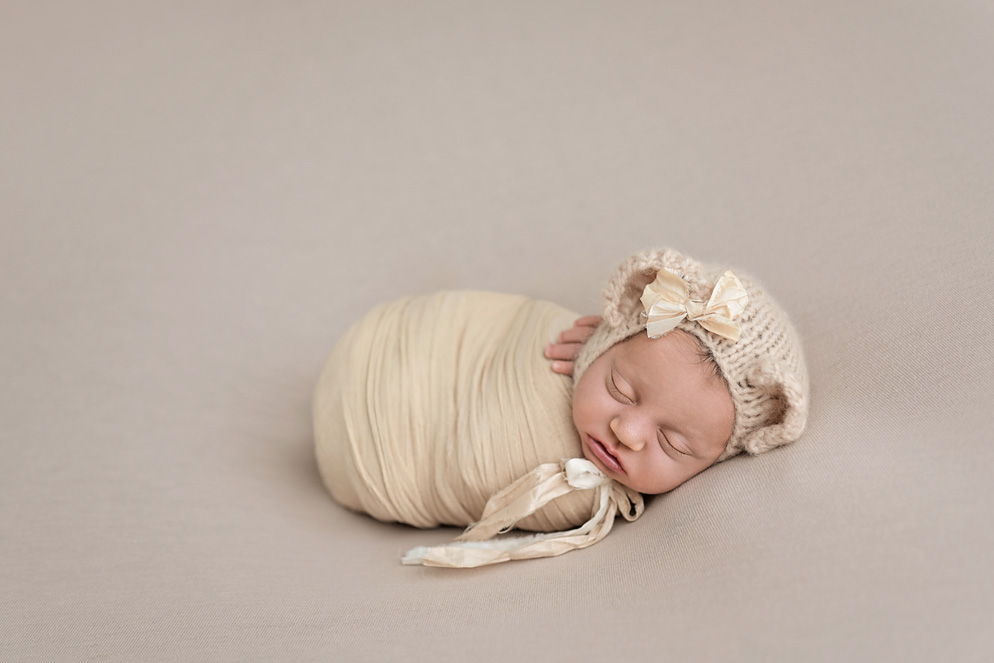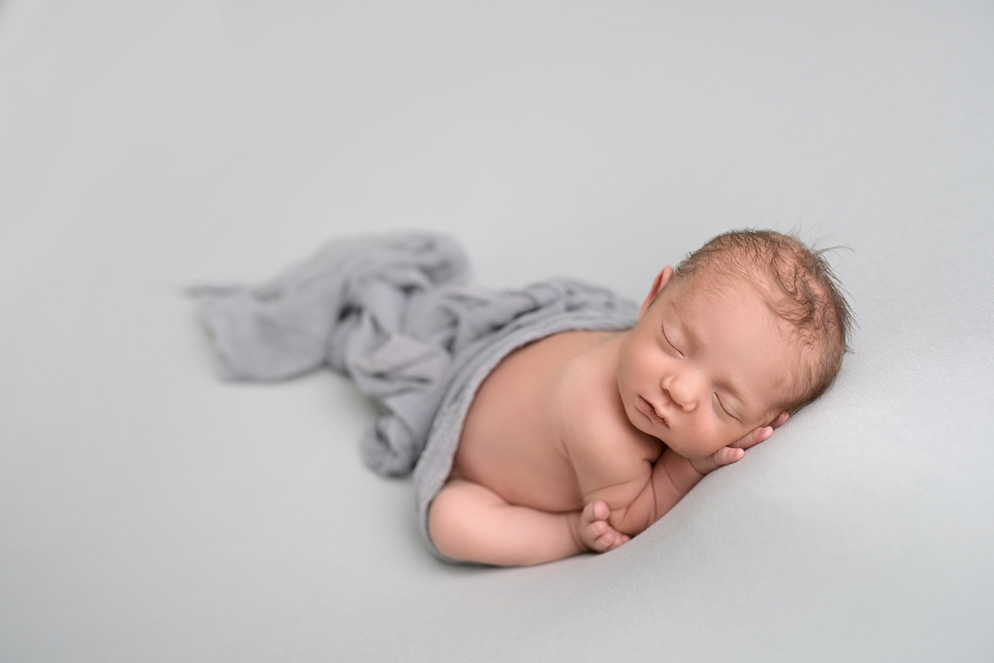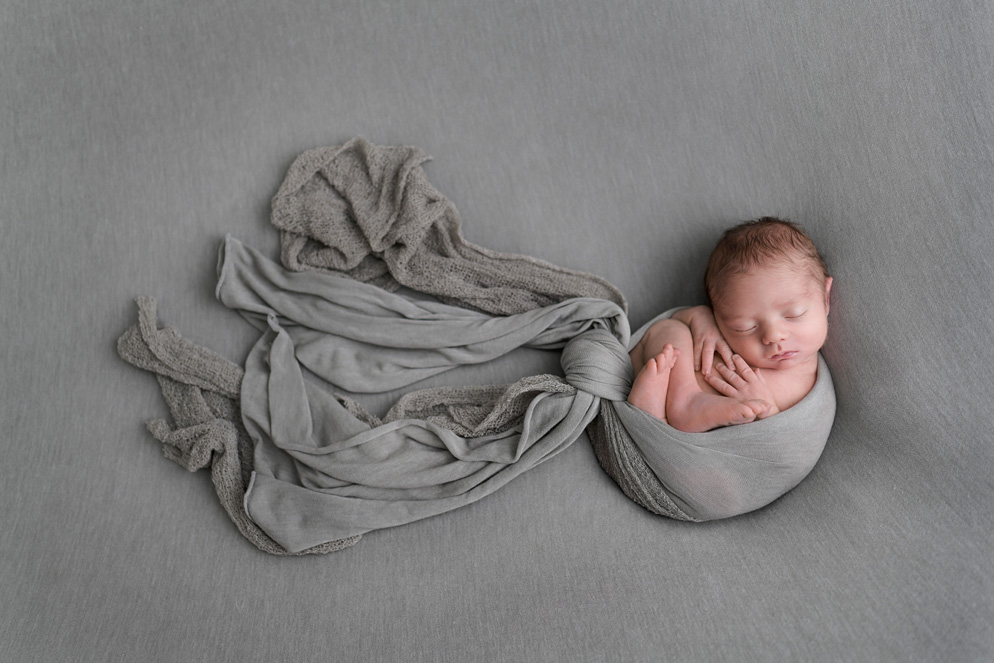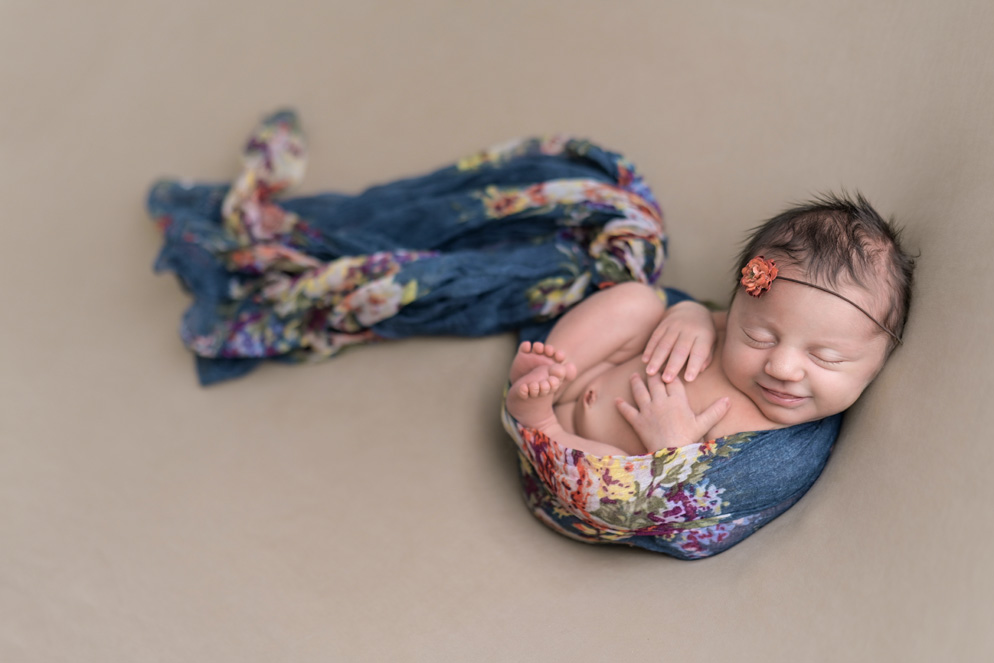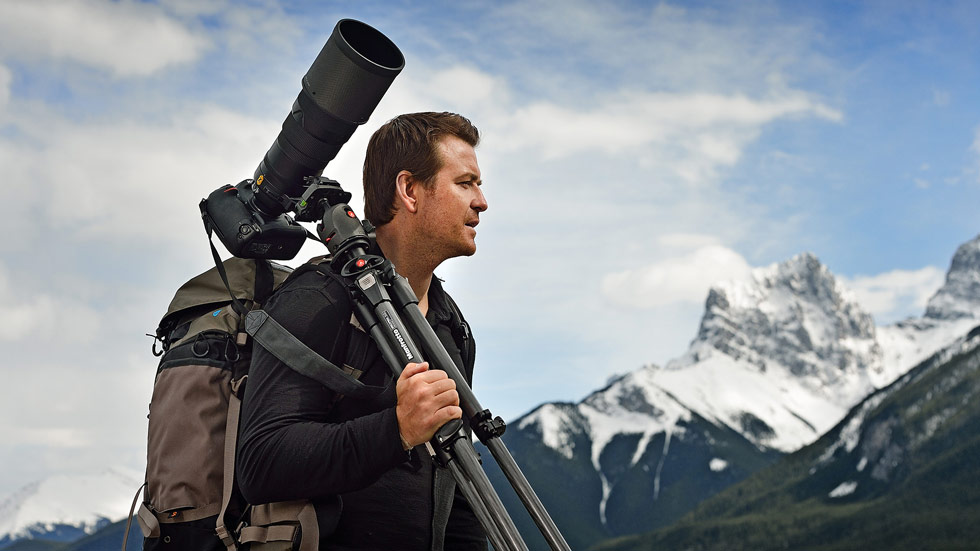Z 7: First Frames
Julia photographed Emmett when he was 11 days old. Z 7, NIKKOR Z 35mm f/1.8 S, 1/200 second, f/1.8, ISO 200, manual exposure.
The pinpoint autofocus is a dream come true.
Julia Kelleher takes photographs that will be part of a family's intimate history, images that will be viewed countless times through the years and the generations. She works quickly, counting on people skills, a carefully crafted studio setup and complete mastery of her equipment.
For these photos, that equipment included a new camera, as Julia, a Nikon Ambassador, had a chance to work with the Z 7, Nikon's first full-frame mirrorless, shortly before its official introduction.
When we talked with Julia about her photography with the Z 7, we asked first about her approach to her subjects, and what we found out was that timing is pretty much everything.
Madison was ten days old when Julia photographed her. The Z 7's tilt screen gave Julia a view of the high-angle shot. Z 7, NIKKOR Z 35mm f/1.8 S, 1/200 second, f/12, ISO 100, manual exposure.
Early Days
For Julia, the ideal age of newborns as photography subjects is between seven and 12 days. "I usually don't like to photograph babies younger than four days," she says, "and although I have photographed babies as old as six or eight weeks, I can't get as many of the poses I can get when they're still curly and flexible."
That's the key: flexibility. "I like to photograph them young because they're still extremely flexible, and I can kind of shape them into whatever I want. Between five and 12 days is my sweet spot."
Another sweet spot is her studio. "All mom and dad have to do is show up with the baby," Julia explains. "We're equipped to handle everything. We have what we call a table setup where we change out fabrics and backdrops." She also has all the wraps, headbands and hats that will adorn the newborns. "We have everything on hand, and I design the sessions and keep to a specific color scheme so everything is coordinated and can go into an album seamlessly for the clients." Indeed, one of the skills Julia offers her clients is her eye as a designer and a coordinator. As she says, "All of that factors into the final image."
Sometimes parents will bring their own wraps, but Julia finds that doesn't often work for the coordinated look she wants to create for them. "Honestly, clients usually don't have any idea of what looks good in imagery," she says, "so I tend to veer away from what they bring unless it's a very special heirloom or something that grandma knitted; if it's that, I'll try to use it."
A full newborn session, which includes parent and sibling images with the baby, usually runs just under two hours; a baby alone, about an hour to an hour and a half.
Working with siblings is sometimes more challenging than it might sound, as the siblings might be beginning to fully realize what's coming into their lives. "That's one of the reasons I like to photograph the newborns at a week old," Julie says. "The sibling is still in that 'honeymoon' period, where they like the baby and they haven't quite realized yet that mom has to split her attention. Once the babies are three weeks old, siblings who are 18 months to two years sometimes reject the newborn, and there's no negotiating with a two-year-old. Getting them photographed with the baby is like trying to nail Jell-O to a tree."
Another high-angle image of Madison taken using the tilt screen. Z 7, NIKKOR Z 35mm f/1.8 S, 1/200 second, f/2, ISO 100, manual exposure.
Emmett in a colorful wrap. Z 7, Mount Adapter FTZ, AF-S NIKKOR 50mm f/1.4G, 1/200 second, f/2.2, ISO 250, manual exposure.
Enter the Z 7
Interestingly, the new camera might just have a partial solution to surly siblings, should that problem arise. It's the silent shutter mode.
"it's a little weird, a little surreal, but absolutely empowering," Julia says. "Newborns tend to sleep through a lot, so it's not a big thing there, but I think it's nice for parents and siblings. People have this expectation—when the shutter clicks, they judge. They think, Oh, was that a good picture? Did I look good?"
Julia feels that the shutter click can create "a slight barrier of insecurity" between the subject and the photographer. "When you remove that, when you make imagery with no audible sound, all of a sudden the connection between the photographer and the subject becomes that much more intimate. So with siblings and parents it's empowering to have the subject be completely unaware that their photo is being taken."
The silent shutter, she believes, can create "more genuine and honest images—images with more integrity, and I think that's powerful." It can result in expressions that are more thoughtful, more authentic. "There's not that machine between you anymore, and I think that makes the subject feel more comfortable. From a photographer's perspective you know the barrier has fallen and that allows you to connect with your subjects in a much more intimate way. That's a portrait photographer's dream."
A different look for Emmett. Z 7, NIKKOR Z 35mm f/1.8 S, 1/200 second, f/2.2, ISO 160, manual exposure.
Favored Features
Julia used both the Z 7's viewfinder and LCD to compose, sometimes holding the camera overhead and using the tilt screen to "see everything I needed to see—which was awesome."
"Awesome" was the term she also used for the Z 7's pinpoint focus feature. "To be able to fine tune the focus point on that kind of pinpoint level—I could set pinpoint focus on the eyelashes—was incredible. It was a joy to use because I knew I was getting absolutely sharp images. For me pinpoint focus was one of the best features of the camera."
Julia often shot wide open at f/1.8 with the NIKKOR Z 35mm f/1.8 S lens and at f/1.4 with her F-mount AF-S NIKKOR 50mm f/1.4G and the Z camera's Mount Adapter FTZ. She took all the photos using her studio strobe lighting setup and a hand-held light meter.
It took pretty much no time to get used to shooting with the new camera. "Everything was so intuitive," she says. "I picked it up and it felt like my D850, just smaller and lighter. It's incredible for its silent shutter, pinpoint autofocus and the edge-to-edge sharpness of the images.
"This little camera is going to be industry-changing, let me tell you."

